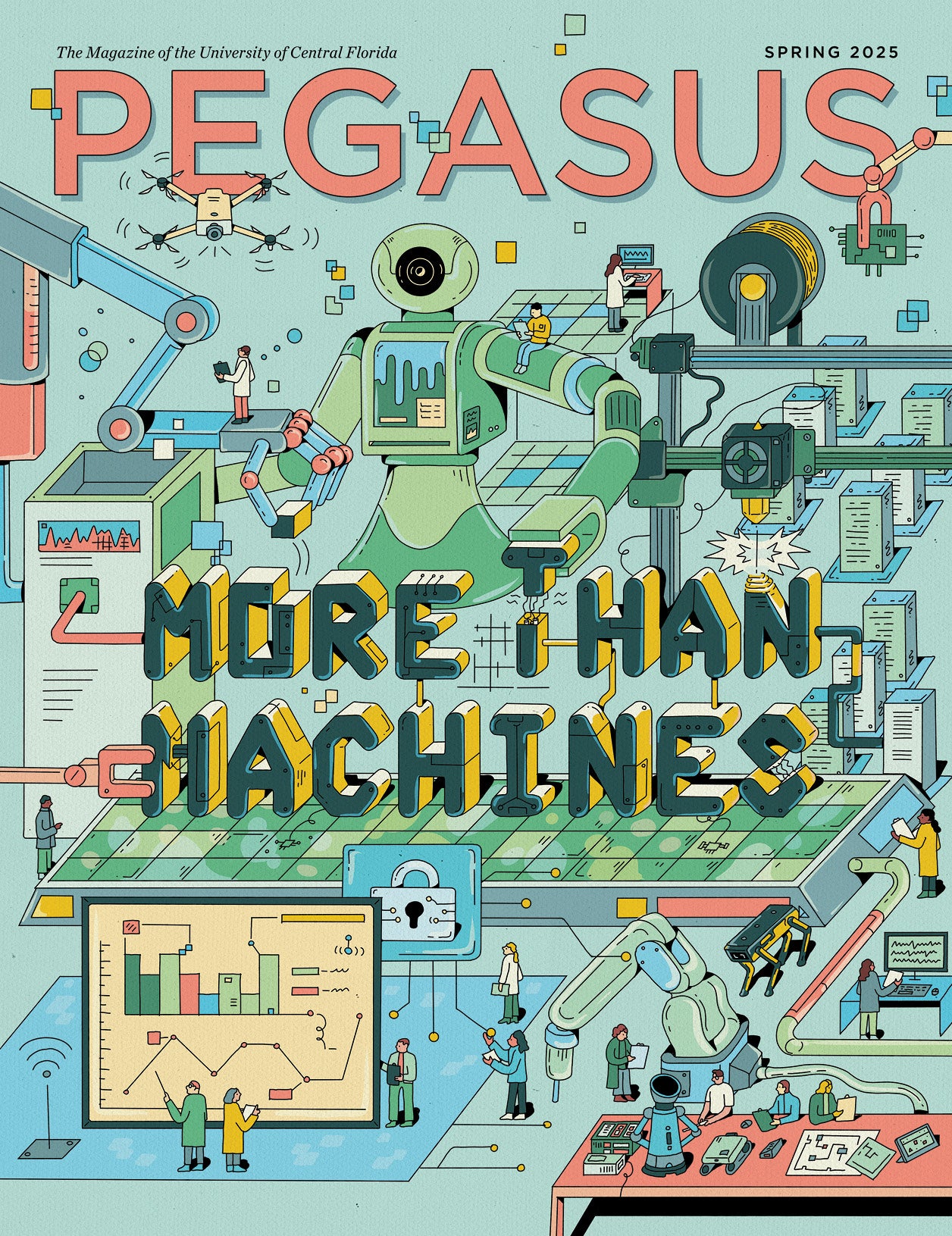In addition to its contribution to the arts and society, music has been shown to make you smarter and boost your immune system. As the semester nears its end — coupled with the stress of the coronavirus pandemic — UCF has turned to four faculty members from the music department for suggestions on the best music to listen to when your brain needs a break.
Here are their top picks for uplifting music along with a little bit of history about each piece.
From Scott Lubaroff, director of bands
- Molly On the Shore by Percy Aldridge Grainger (performed by the Dallas Wind Symphony)
Percy Grainger was one of the most significant composers in the early history of the modern wind band and a champion of the ensemble. He contributed dozens of works to what has since become the core band repertoire. Molly On the Shore was written in 1907 as a birthday present to Grainger’s mother. It is a setting of two contrasting reels, “Molly On the Shore” and “Temple Hill,” and most prominently features the woodwind sections of the ensemble.
- Esprit de Corps by Robert Jager (performed by the United States Marine Band: The President’s Own)
Esprit de Corps is something of a “fantasy-march,” and a tribute to the United States Marine Band, who actually originally commissioned the work. It is based on The Marines’ Hymn and is full of contrasting styles, energy, and drama, including a light quasi-waltz in its middle section.
- Polka and Fugue from the opera Schwanda, the Bagpiper by Jaromir Weinberger, arr. Bainum (performed by the United States Marine Band: The President’s Own)
Schwanda the Bagpiper was a classic opera in two acts from the early part of the twentieth century — a standard story of love found, love lost, and love found again. Through its use of familiar Czech folk tunes, it earned significant popularity upon its initial release, nearly 2,000 stagings in its first decade. While staging of the complete opera are rare since World War II, the instrumental Polka and Fugue is still a very popular part of orchestra and wind band concert programs to this day.
From Alex Burtzos, assistant professor of composition
- Piano Concerto in G (Mvmt. II Adagio assai) by Maurice Ravel
Ravel begins the second movement of this seminal work with an expansive, vocalistic line that blends elements of jazz with rhythms drawn from the waltz. When asked about what many consider his most beautiful melody, he responded, “That flowing phrase! How I worked over it bar by bar! It nearly killed me!” None of that strain is apparent in the melody itself, which floats effortlessly from moment to moment, sustaining almost three minutes before the entrance of the orchestra.
- 5/4 by Gorillaz
The cheerful funkiness of this track disguises its sophistication. To create the constantly shifting sensations in 5/4, Damon Albarn (also known as Gorillaz) layers rhythmic ostinatos of different lengths over one another. This results in a constantly surprising metrical scheme, and results in 5-bar phrases, which is unusual in this style.
- Overture to Tannhauser by Richard Wagner
Wagner’s overture is a masterclass in how to transform material over time. The simple, chorale-like melody first heard in the woodwinds in the opening bars of the piece returns multiple times, and is subjected to various transformations of meter, orchestration, and dynamics. Every iteration is different, but each one is effective; and taken together, they make for an emotional tour de force.
From Tommy Harrison, associate director of the School of Performing Arts and professor of music business and technology
- Knight Time; Spectrum; and The Pegasus by Tommy Harrison Group
Tommy Harrison Group was a band that I was in when I first came to UCF in 2017. Though the band is currently on a hiatus, it includes two fantastic musicians: Peter Mosley, the bassist from the multi-platinum group Yellowcard, and noted session drummer, Eric Bailey.
The record was recorded earlier in 2017, but not released until October of the same year. The three songs I selected from the group’s only release were inspired by my new position at UCF. Coming back to UCF was one of the happiest events of my life, and these three songs have always reminded me of that happy time.
I had always been a fan of UCF Athletics, dating back to my previous appointment from 2005 to 2006. Knight Time was inspired by the football team, while Spectrum was inspired by the men’s basketball team. The Pegasus has been a long-standing symbol associated with UCF, especially when I was in my previous appointment.
From Jeffrey Rupert, director of Jazz Studies
- On the Street Where You Live by Mel Torme
One of the greatest jazz singers of all time swings with a velvet tone, and sings about love in the most joyous fashion.
- Single Petal of a Rose by Billy Strayhorn (performed by Ben Webster)
As the title suggests, this Billy Strayhorn composition is about enjoying the finer things in life. Ben Webster has a glorious tone, and provides more information in one note than most can convey in an entire performance.
- Her by Stan Getz
The most moving third stream or perhaps jazz composition about a woman. The improvisation by Getz is beyond imagination.
- Hard Times by David “Fathead” Newman (performed by Ray Charles)
Fathead is about swing, sound and storytelling. Jazz and Blues musicians were far ahead of therapists — they’ve known for quite a long time that the way to get over sadness is to go through it. Hard Times is a joyous pronouncement of the cathartic process.





